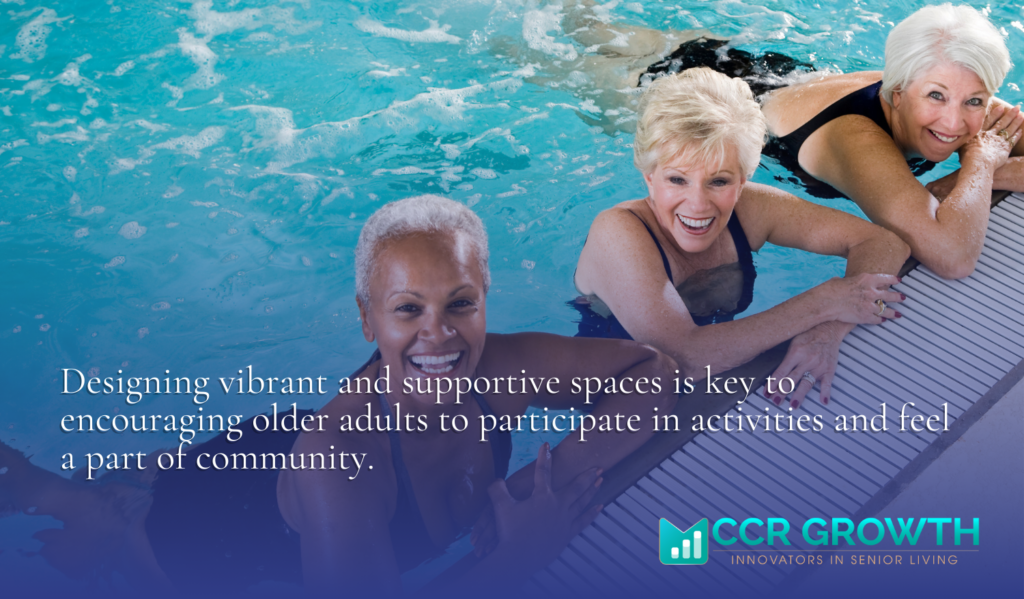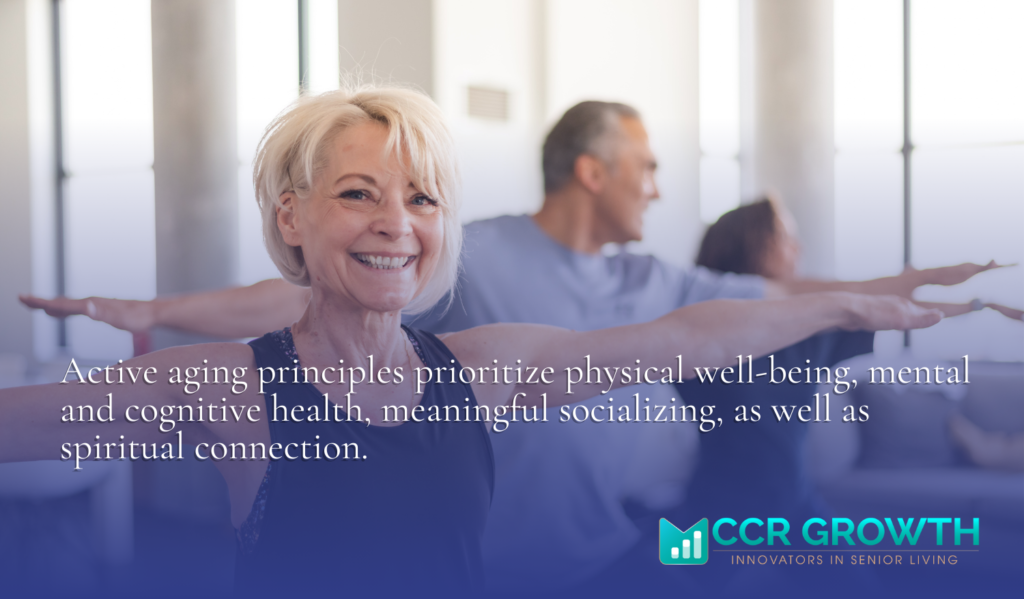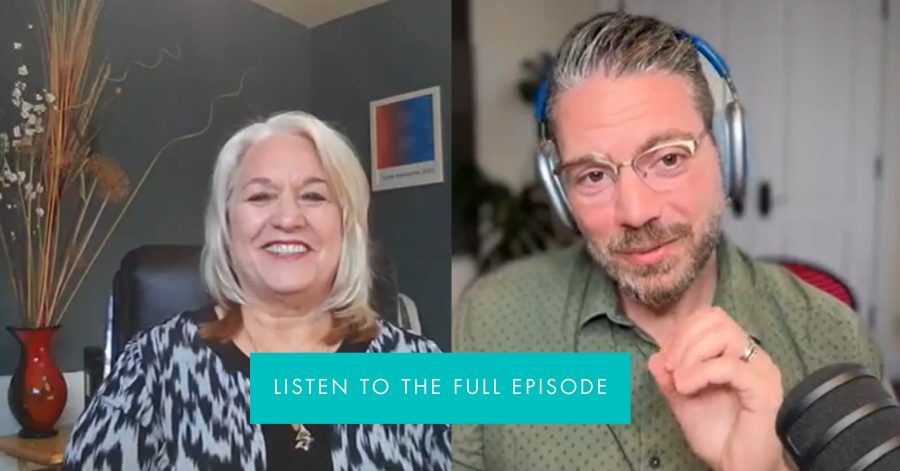
CCR Growth
Why Active Aging Is a Critical Part Of Modern Senior Living
Active aging is making a big impact on the world, and specifically on senior living. Enter the term “active aging” into any search engine, and you’ll find several research papers espousing its benefits. Even the World Health Organization recognizes the concept as a vital strategy for the world’s aging population, with an entire policy framework dedicated to guiding action plans based around the concept. It certainly seems to resonate.

Outline
Published on
28/08/2024
Beyond healthcare, today’s older adults want vibrant communities that support their physical, mental, and social well-being. In this article, we explore how senior living providers can successfully incorporate active aging principles, from understanding resident needs to overcoming operational challenges and leveraging technology. By prioritizing resident engagement, wellness, and independence, communities can create thriving environments that redefine retirement living.
Senior housing has fallen short of supporting active aging in previous decades. In a report released early 2024, funded by National Investment Center on Seniors Housing & Care (NIC), NORC of the University of Chicago set out to analyze the impact on longevity for older adults who move into senior housing. Results showed that senior housing residents experience greater longevity and receive more preventative care compared to those older adults who did not stay in senior housing.
While the overall findings are positive, the report did point out the significant variation between senior living communities, suggesting that certain factors within these communities contribute to improved health outcomes. The report also observes that “longevity should not just be about adding years to life but about enriching those years with health, happiness, and fulfillment.” This is where the opportunity for applying the principles of active aging shows clear advantages.
How Blue Zones Influence Active Aging
The International Council for Active Aging defines the concept as empowering individuals to live life to the fullest, regardless of age or circumstances. It encompasses physical, mental, emotional, social, and spiritual well-being, encouraging full participation in community life. This holistic approach to later life is increasingly recognized as essential for enhancing quality of life, boosting independence, and even improving health outcomes. Research into longevity hotspots, often referred to as “Blue Zones,” has provided invaluable insights into the lifestyle factors that contribute to longer, healthier lives.These regions, characterized by high life expectancy and low rates of chronic disease, share commonalities in diet, physical activity, social connections, and mindset, all of which align with the principles of active aging. By studying the habits and environments of Blue Zone residents, senior living communities can derive inspiration for creating vibrant and supportive living spaces. Incorporating elements of Blue Zone culture, such as a strong emphasis on plant-based diets, regular physical activity, and a sense of purpose, can significantly enhance residents’ well-being and overall quality of life.From Healthcare to Life-Centric

There’s no doubt that the senior living industry is undergoing a major paradigm shift. Once primarily healthcare-focused, the spotlight now shines on creating vibrant, engaging communities that cater to residents’ overall well-being. This life-centric approach, rooted in active aging principles, is redefining what it means to grow older. To foster a culture of active aging, senior living communities must prioritize resident well-being through thoughtful design, diverse programming, and supportive services.
This includes creating accessible spaces that encourage physical activity, offering a rich array of mental stimulation opportunities, and fostering a strong sense of community. Technology can also play a vital role in enhancing residents’ lives, from wearable fitness trackers to online learning platforms.
Incorporating Active Aging into Senior Living Communities
While the benefits of active aging are clear, implementation can present challenges. Addressing resident hesitancy towards new activities or exercise programs, ensuring inclusivity, and effectively integrating technology are key considerations. This includes providing clear communication, offering gradual introductions to new activities, and creating a supportive environment where residents feel encouraged to participate. By overcoming these obstacles and creating tailored programs, communities can unlock the full potential of active aging for their residents. It’s important to remember that active aging isn’t solely about physical health. It encompasses a person’s entire well-being, from their mental and emotional state to their social connections and spiritual fulfillment.  Here are some ways a senior living community might incorporate active aging principles into its daily activities:
Here are some ways a senior living community might incorporate active aging principles into its daily activities:
Prioritize Physical Well-being
- Accessible Spaces: Ensuring common areas, dining rooms, and recreational spaces are designed for easy navigation and participation. According to the Blue Zone website, our environments have a major impact on our health and well-being as we age, making your community’s spatial design a critical factor to consider when trying to adhere to active aging principles.
- Exercise Programs: Offering a variety of exercise options, from low-impact classes to outdoor activities, to cater to different fitness levels. This means staying up to date with the latest research on what types of physical activity might be most engaging and beneficial, and how to make these accessible for a variety of abilities within your community.
- Nutrition and Wellness: Promoting healthy eating habits through cooking classes, nutrition education, and access to fresh produce are all a good starting point, as is offering your own menu of delicious but healthy dishes.
Stimulate Mental and Cognitive Health
- Educational Opportunities: Providing opportunities for lifelong learning through lectures, workshops, and classes.
- Cognitive Exercises: Incorporating brain-stimulating activities like puzzles, games, and memory exercises into daily routines.
- Creative Outlets: Encouraging artistic expression through art, music, or writing programs.
- Psychological support: Moving to a community is a major life decision that can trigger a cascade of emotional and psychological reactions. Being able to support your residents with practical and compassionate psychological support can ensure an easier transition into the community.
Foster Social Connections
- Community Building Activities: Organizing group outings, social events, and volunteer opportunities.
- Intergenerational Programs: Creating opportunities for interaction with younger generations through shared activities.
- Technology for Connection: Utilizing technology to facilitate virtual visits with family and friends.
Support Spiritual Well-being
- Interfaith Spaces: Providing quiet spaces for reflection and meditation.
- Spiritual Programs: Offering opportunities for spiritual growth through religious services, meditation classes, or support groups.
- Volunteerism: Encouraging residents to give back to the community through volunteer activities.
Staff Training and Support
Empowering your staff contingent is essential for successful active aging implementation. Comprehensive training on aging, wellness, and inclusive practices is paramount. Equip your team with the knowledge and skills to foster a vibrant, supportive community.
Get Locals Involved
Collaborate with external experts to enhance your active aging programs. Partner with healthcare providers, fitness centers, universities, schools, and local organizations to offer a wider range of services and resources. These partnerships can also help to increase your community’s visibility and reputation as an active aging leader.
The Role of Niche Marketing in Active Aging
To effectively implement active aging principles, senior living communities must understand the diverse needs and preferences of their residents. This is where niche marketing comes in. It offers a powerful approach to tailoring offerings to specific demographics. Getting to know your residents’ unique interests will help you to create more engaging and fulfilling experiences. For example, a community focused on active adults might offer on-site fitness centers, travel clubs, and volunteer opportunities.
Conversely, a community serving individuals with memory impairments could benefit from specialized programming, sensory-rich environments, and dedicated support staff. Niche marketing not only enhances resident satisfaction but also strengthens a community’s brand identity. By positioning itself as an expert in a particular area, a senior living community can attract a specific target audience and build a loyal customer base. Listen in to our interview about Niche Marketing for Senior Living on From Leads to Leases
The Importance of Data-Driven Decision Making
To successfully implement an active aging strategy, data is essential. By tracking resident engagement and feedback, program utilization, and health outcomes, communities can gain valuable insights into what works and what doesn’t. This data-driven approach enables informed decision-making, allowing for continuous improvement and optimization of services. Moreover, data can be used to identify emerging trends and anticipate future resident needs. By staying ahead of the curve, senior living communities can position themselves as leaders in the industry and attract forward-thinking residents.
The Role of Technology in Active Aging
By integrating innovative tech solutions, senior living communities can enhance residents’ quality of life and create more engaging experiences. Wearable devices can track physical activity, monitor vital signs, and provide personalized health insights. Virtual and augmented reality can be used for therapeutic purposes, cognitive stimulation, and social interaction.
Online platforms can facilitate communication, education, and social engagement among residents which can be a powerful motivator, encouraging some residents to get more active more often. It’s important to note that technology should be used as a tool to enhance human connection, not replace it. By combining technology with traditional approaches, senior living communities can create a truly holistic and enriching environment for residents.
Overcoming Challenges and Building a Strong Foundation
Implementing an active aging strategy requires a comprehensive approach that addresses potential challenges. By fostering a culture of wellness, providing individualized support, and leveraging technology, senior living communities can create environments where residents thrive. Additionally, building strong partnerships with external experts and organizations, communities can expand their offerings and resources, creating a more robust support system. Ultimately, the success of an active aging program depends on a strong foundation built on resident-centered care, innovative programming, and a commitment to continuous improvement.
By prioritizing the well-being of residents and embracing the principles of active aging, senior living communities can create a lasting legacy of health, happiness, and fulfillment. At CCR Growth Agency we help Senior Living communities generate highly qualified leads through holistic marketing strategies that focus on your niche. Get in touch to discuss your Senior Living marketing strategy and community growth.
Subscribe to our newsletter
Sharpen your expertise and stay ahead of senior living industry trends—subscribe to CCR Growth’s newsletter for exclusive insights and updates.
Recent Posts


How Senior Living Solves the Family Caregiving Crisis and Improves Quality of Life

Redefining Senior Living Marketing, Sales, and Operations
CONTACT ADDRESS
8710 Carmel Valley Road, Carmel, CA 93923
GENERAL INQUIRIES
info@ccrgrowth.com
(831) 273-3628
SOCIAL MEDIA





